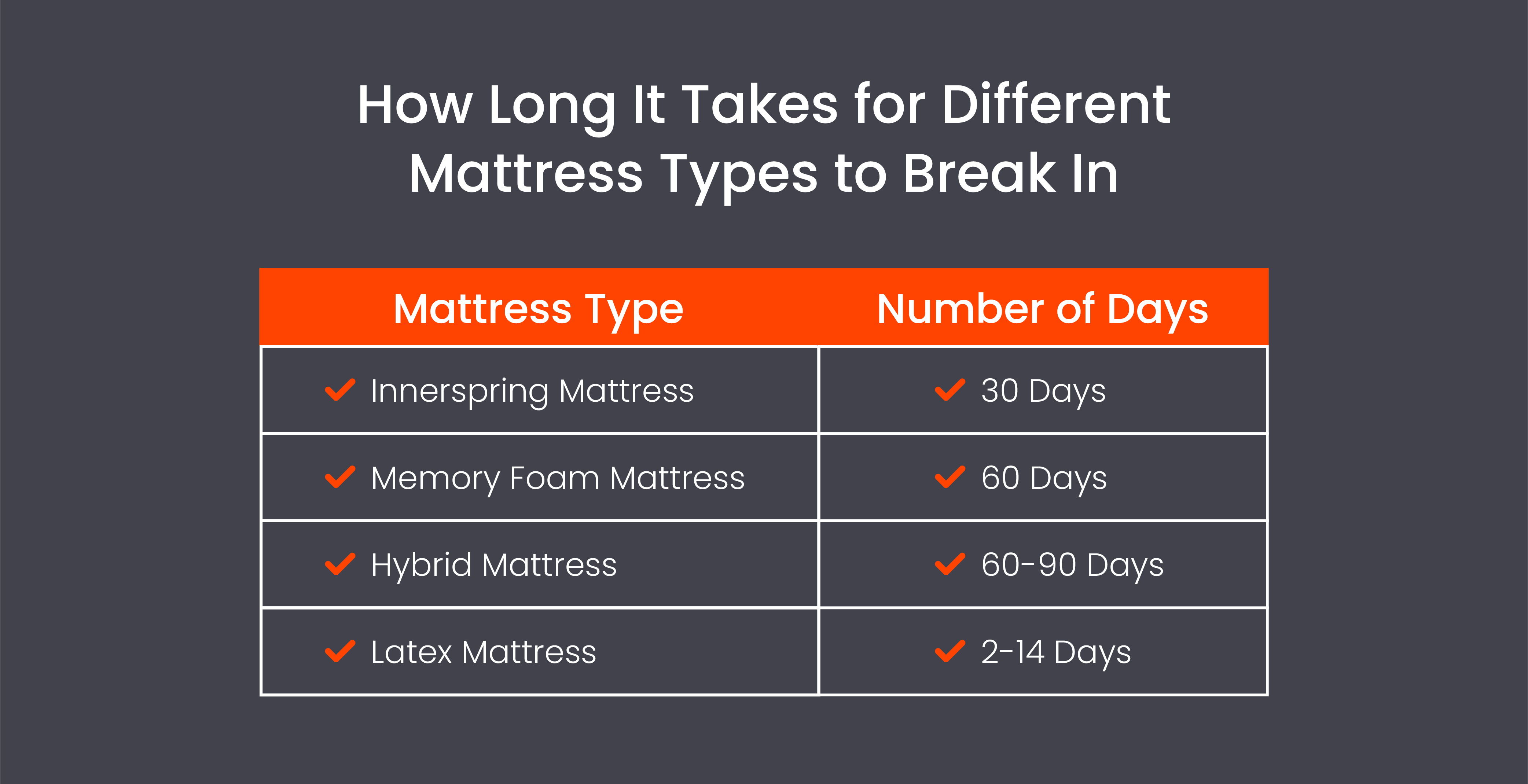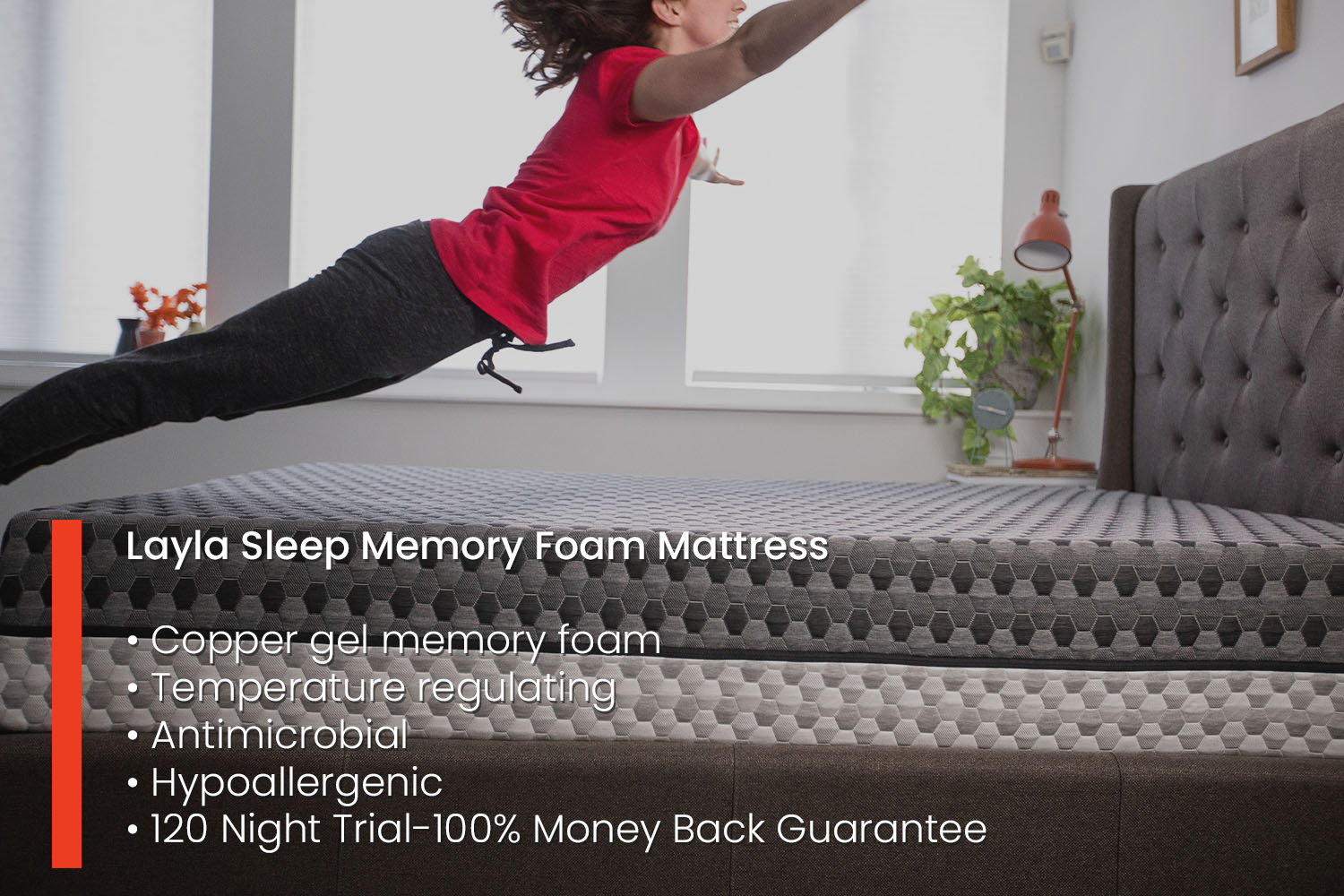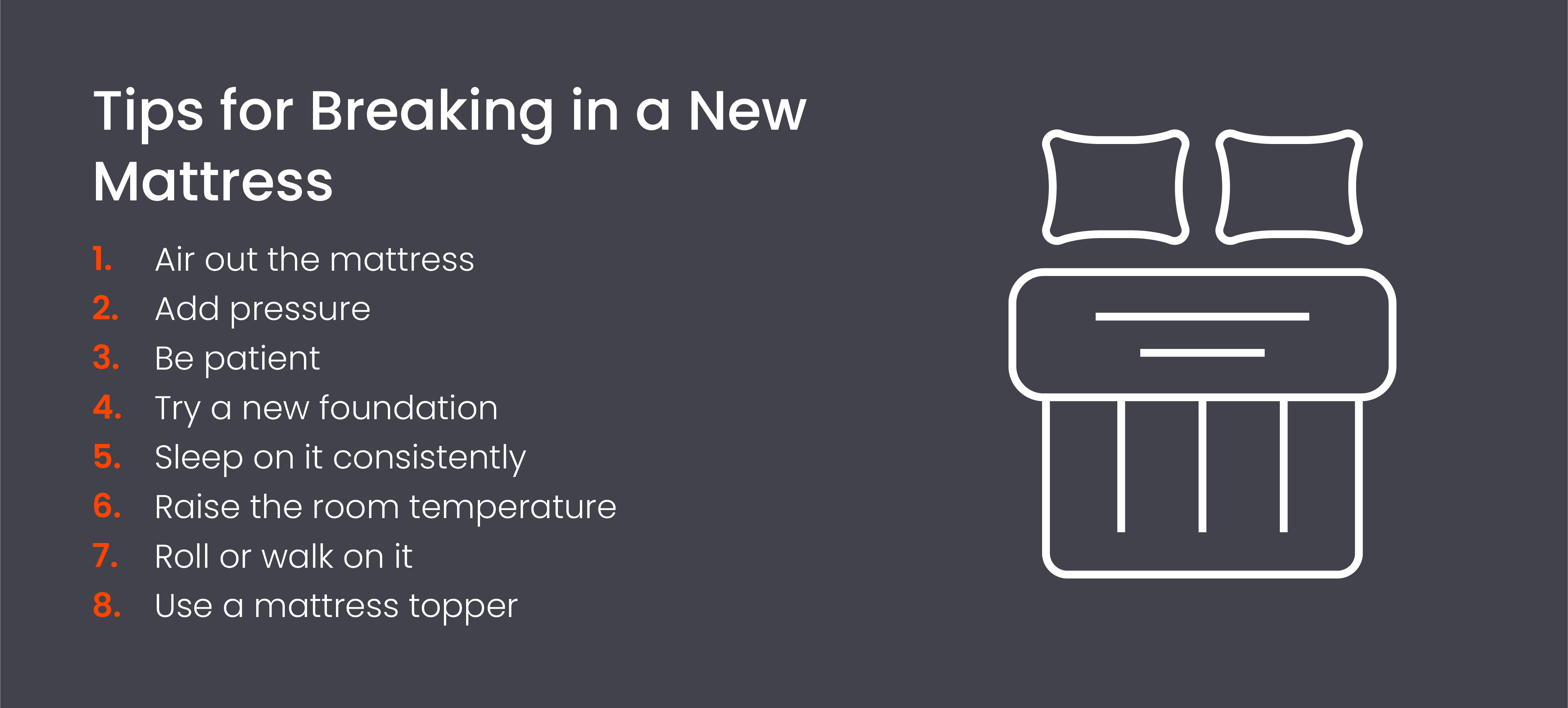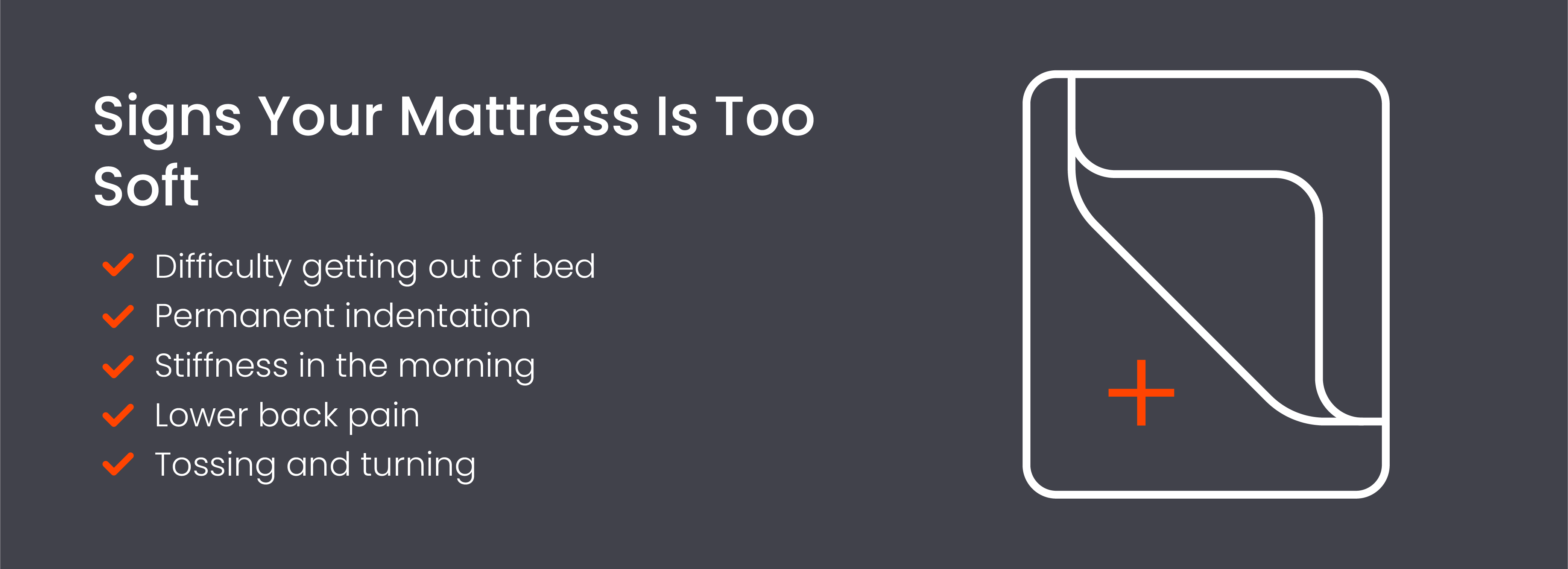How Long Does It Take to Break in a Mattress?

Every mattress is different, meaning it can take a few weeks or months to break in, depending on the type of mattress and how comfortable you find it. So, if you’re wondering, “how long does it take to break in a mattress?” you’ve come to the right place. Whether you’re curious about what your new mattress might feel like or you’ve recently purchased one and want to know when it will feel like your previous mattress, this article will answer your question and provide tips to make your new mattress comfortable faster.
- How Long Does It Take to Break a Mattress in?
- How to Break in a Mattress
- When Should You Consider Returning a New Mattress?
- FAQs
- Wrapping Up: Breaking in a Mattress
How Long Does It Take to Break a Mattress in?
Generally, it takes a few weeks to a few months to break in a new mattress. The time it takes depends on several factors, including the type of mattress. Again, every mattress is different, and so is every person. While it might take your partner only a few weeks to get comfortable on the new mattress, it can take you much longer to feel like you’ve broken it in. Let’s explore the different types of mattresses and how long it usually takes to break them in.

Innerspring mattresses
Innerspring mattresses can be comfortable as soon as you have them ready. However, they may take up to 30 days to break in for some people. Since they’re made with springs, these mattresses adjust to your weight, so most people find them comfortable on the first night. However, innerspring mattresses are much less popular today than they used to be because they degrade faster and may need to be rotated at least a few times a year to prevent sinking and sagging.

Memory foam mattresses are made entirely from foam, usually taking around 60 days to break in because they’re made from heavier materials. If your new mattress is memory foam, be patient because it can take up to two months or more for it to feel more comfortable. In addition, the density of the foam may also affect how long it takes to break in. For example, higher-density foams will take longer because they’re more resistant to your weight.

Hybrid mattresses are a combination of memory foam and innerspring mattresses. These usually take the longest to break in, usually around 60 to 90 days. Of course, how long it takes will depend on the density of the foam, but since they’re a combination of the two most popular types of mattresses, they may take longer to feel comfortable.
Latex mattresses
Latex mattresses are the higher-end options for mattresses. They’re more expensive than innerspring, hybrid, and memory foam mattresses, but you can break them in faster. Latex mattresses are typically broken in within two days to two weeks. However, the length of time may depend on the type of latex and whether the mattress is a hybrid.
How to Break in a Mattress
How long does it take to break in a mattress? As we now know, it depends on the type of mattress, such as innerspring, memory foam, and latex mattresses. It’s important to note that discomfort when sleeping on a new mattress is a relatively common experience, as many people may notice minor aches and pains in the morning as they adjust to their new mattress. However, there are a few things you can do to make your mattress feel more comfortable faster, including the following:

Air out the mattress
Letting your mattress breathe and air out after you get it can help you break it in faster. However, when your mattress arrives and you unpack it, you might realize there’s a smell. This new mattress smell is something called off-gassing, which occurs when the mattress is freed from its packaging. Depending on the mattress, off-gassing can be dangerous. However, many brands today don’t use dangerous chemicals during production, so off-gassing is usually not a cause for concern.
Unfortunately, the odor can be enough to keep you off your mattress for at least a few days before using it. With that said, it’s recommended to let the odor dissipate before using your mattress to make it more comfortable and easier to sleep in. You only need to let your mattress air out for a few days to help it breathe and let it expand fully.
Add pressure
Adding pressure is another good way to break your mattress in because it will help it conform to your body without needing to sleep on it. Walking on top of your memory foam mattress can help you soften it and loosen the fibers to help it start conforming to your body. Meanwhile, you can crawl on spring mattresses to get the same effect. Adding pressure can help make it slightly softer since many mattresses may be too firm when you first use them.
Be patient
Of course, the best way to break in your new mattress is to be patient. As we’ve mentioned, it can take anywhere from a few days to a few months for your mattress to feel comfortable. During that time, you may simply have to get used to it, and the only way to do that is to continue sleeping on it and adding pressure throughout the night to soften it up.
Try a new foundation
If you’re using your old foundation, it’s possible your new mattress isn’t comfortable because you’re using the wrong foundation or bed base. This can happen if you switch from an innerspring to a memory foam mattress. There are many types of bed bases, so if you’ve recently purchased a new mattress, find out whether or not you’re using the right foundation by asking the manufacturer or looking on the company’s website for suggested foundations.
Sleep on it consistently
As we’ve mentioned, sleeping on your mattress every night is the best way to break it in. Your mattress needs time to conform to your body, and it can’t do that if your body isn’t in it. Of course, you also need to get used to your new mattress. If you’ve recently upgraded from a soft to a firmer mattress, you may find it difficult to adjust. This will take some time, so continue to sleep on it to help your body get used to the mattress and allow time for the mattress to conform to your body and preferred sleeping position.
Raise the room temperature
If you purchased a memory foam or hybrid mattress, you might be able to soften it by turning the temperature up in your room. Memory foam is sensitive to temperature and will get softer when it’s warm. Therefore, you can turn your thermostat up a few degrees to see if that makes a difference, allowing it to mold to your body faster.
Use a mattress topper
If your mattress is uncomfortable or causes pain, you might consider using a mattress topper until the mattress is broken in. A mattress topper can be used to make a mattress softer or firmer, depending on your preferences, while adding thickness that can drastically change the way your mattress feels, making it more comfortable to sleep on, whether it’s new or old.
When Should You Consider Returning a New Mattress?
Mattresses cost a lot of money, so you should do everything you can to try to break them in. Unfortunately, not all mattresses are perfect, and sometimes people buy the wrong mattresses for their needs. Since every mattress is different, you might not know whether one is right for you until you start sleeping on it. Of course, there are several ways to get rid of a mattress, including returning it if you’re within the trial period or donating it. Whatever the case, there are some instances when you might feel as though your mattress never broke in, indicating it’s either too firm or too soft. If this occurs, you might need to return your new mattress and try a new one.
When a mattress is too firm
When a mattress is too firm, you might experience the following:

- Back, neck, or shoulder pain: A mattress that’s too firm can cause back, neck, and shoulder pain because it doesn’t properly support your body, putting it out of alignment.
- Discomfort in the hips and legs: Again, because a mattress that’s too firm can put your body out of alignment, it can affect your hips and legs, especially if you’re a side sleeper.
- Tingling sensations in extremities: If you sleep on your arms or legs, they can easily fall asleep if your mattress is too firm because they don’t sink into it enough to protect them.
- Tossing and turning: If your mattress is too firm, it might make you uncomfortable, causing you to toss and turn throughout the night.
- No give on pressure points: A good mattress needs to be comfortable and gentle on the pressure points to prevent pain, such as your hips and shoulders. However, a mattress that’s too firm for your body type, sleeping position, and needs can cause pain and discomfort throughout the entire body.
When a mattress is too soft
When a mattress is too soft, you may experience the following:

- Difficulty getting out of bed: If your mattress feels too much like a cloud and you find it difficult to sit up to get out of bed, it’s likely too soft for you.
- Permanent indentation: Mattresses that are too soft can leave a permanent indentation where you sleep, which can cause you to roll toward the middle of the mattress during the night.
- Stiffness in the morning: A mattress that’s too soft can cause stiffness for the same reason a firm one can; because it doesn’t put your body in proper alignment, you can feel muscle pain the following day.
- Lower back pain: If you sleep on your back or stomach, your hips might not be properly aligned if your mattress is too soft, leading to lower back pain.
- Tossing and turning: Some sleepers don’t like soft mattresses, which can leave them uncomfortable all night long. If you’re constantly tossing and turning, it may indicate your mattress firmness is not right for you.
FAQs
How long do mattresses last?
The lifespan of a mattress depends on its type. However, most mattresses last an average of 7 to 10 years. If you’ve had your mattress longer than this, it may be time to consider buying a new one.
Should a new mattress cause back pain?
If you find yourself waking up in pain, your new mattress might be to blame. New mattresses can cause all types of pain, including back pain, because you need time to adjust. Meanwhile, your mattress needs time to conform to your body. If the pain persists, it can disrupt your sleep quality and overall health, so you might need to consider alternative mattress options.
Should you walk on a new mattress to break it in?
Walking on a new mattress can help break it in by helping it soften up. However, you should avoid wearing shoes when walking on your mattress, especially if it’s memory foam or latex. Meanwhile, you shouldn’t walk on innerspring mattresses because it can cause wear on the springs. Instead, you can crawl on them for the same effect.
Wrapping Up: Breaking in a Mattress
Breaking in a mattress takes time. When using your new mattress, it’s common to experience some discomfort. However, your new mattress should not negatively affect your sleep quality. Most mattresses take a few days to a few months to break in, with memory foam and hybrid mattresses needing the longest time to conform to your body.
Layla’s memory foam and hybrid mattresses are designed to be used right out of the box, allowing you to get quality sleep from the first night. However, adjusting to a new mattress takes time, which is why we have a 120-night sleep trial. If your mattress doesn’t break-in within that time frame, you can return your mattress, and we can discuss your needs to help you find the perfect sleep solution.






